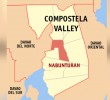When a colleague nominated me for the ALS Ice Bucket Challenge, I decided neither to post a video nor to donate to any of the foundations involved. One reason is that I find the challenge a bit self-congratulatory, which, instead of serving its purpose of advocating awareness about the disease, ended up as a craze with many of those who braved the challenge remaining unaware of what the letters A-L-S represent.
And while donating would be nobler as it could have a direct impact to the campaign for extensive medical research on ALS, I still did not respond as I also have my personal struggles with raising funds for my own medication. As my counterpart to the campaign and, to be specific, to the growth of medical research in the Philippines, I choose to dedicate this column instead.
ALS or Amyothropic Lateral Sclerosis, as defined in the website of the ALS Foundation, is a motor-neuron degenerative disease. When the motor neurons die, the ability of the brain to initiate and control muscle movement is lost. With voluntary muscle action progressively affected, patients in the later stages of the disease may become totally paralyzed. According to the ALS Clinic of the Johns Hopkins School of Medicine, ALS accounts for five of every 100,000 deaths among Americans.
According to the DOH, incidence of ALS among Filipinos is relatively lower than among Americans. Of similar nature as one of the leading causes of death in our country is nephrotic syndrome, a disease of the kidneys characterized by edema (swelling) and loss of protein from the blood into the urine. Since the 1980s, it remains to be in the top ten, accounting for 8 to 13 deaths for every 100,000 cases. Although there are treatments to manage the symptoms, there is still no known cure, and studies on the distinct causes are still on going.
Even the prevalence of dengue in the country is as alarming as ALS. Dengue is consistent to be in the top five of the most dangerous infectious diseases among Filipinos with no known and approved cure as of yet.
Surprisingly, not a single Filipino dared a similar challenge to campaign for an extensive research for such medical conditions that are more familiar to our context than the ALS. The bigger question, however, is whether we have existing medical research facilities to even entrust whatever funds raised had we done the same challenge earlier.
In the US and in most European countries, part of their healthcare services is medical research. While they may have been studying about diseases that also plague a number of Filipinos, we could not just sit down and wait for foreign scientists to discover particular treatments. One reason is economics. Once the medical treatment in whatever form gets patented, we can do nothing but end up as mere consumers, dependent to the price-dictates of multinational pharmaceutical companies. And given the very low government budget for healthcare, which costs about P2.50 for every Filipino per day (2014 DOH Budget), we could not expect a relief.
Another reason is biological. Some treatments that work best for Caucasians and Americans may not be as effective for us Filipinos because of the differences in our biochemical make-up. Hence, in some cases, there are needs for “customized” treatments that fit our genetic make-up.
Even researches on medicinal plants endemic in the country also tread slowly. For instance, tawa-tawa, which has long been observed to have therapeutic effects for dengue patients, still remains a weed. Just recently, the DOST released the findings of the phytochemical analyses signifying the plant’s potentials as treatment for dengue. However, the FDA said it needs more clinical trials to approve the use of the plant. On the other hand, sibukaw, believed to be potent for leukemia, just remains as a material for making handles for knives, axes, hammers and other tools of some folks in the countryside.
The existing health research institutes owned by the state such as the Research Institute for Tropical Medicine tasked to conduct studies on infectious diseases; the Philippine Council for Health Research and Development of the Department of Science and Technology and the University of the Philippines’ National Institutes of Health are in need of larger budgetary allocation to sustain extensive researches.
Another concern is the lack of competent scientists. While thousands of science and engineering majors graduate from various colleges and universities every year, most of them do not have a sensibility towards research and development because, in the first place, such areas were not emphasized in their curriculum. The result is a bunch of engineers, biologists, physicists and chemists working not as scientists but as mere operators of analytical and or manufacturing equipment in a routine set-up here and abroad.
What could be done? There are a lot, actually. But the first few things involve a paradigm shift among those seated in power especially when it comes to identifying priorities.
In this particular issue, we cannot simply tell a fellow Filipino to start the change from oneself without first calling for a change in the system. We cannot expect each of our neighbors to put up a research laboratory in their backyard. While struggling for such transformations to take place, the best thing a common Filipino could do is to stay healthy. (davaotoday.com)










